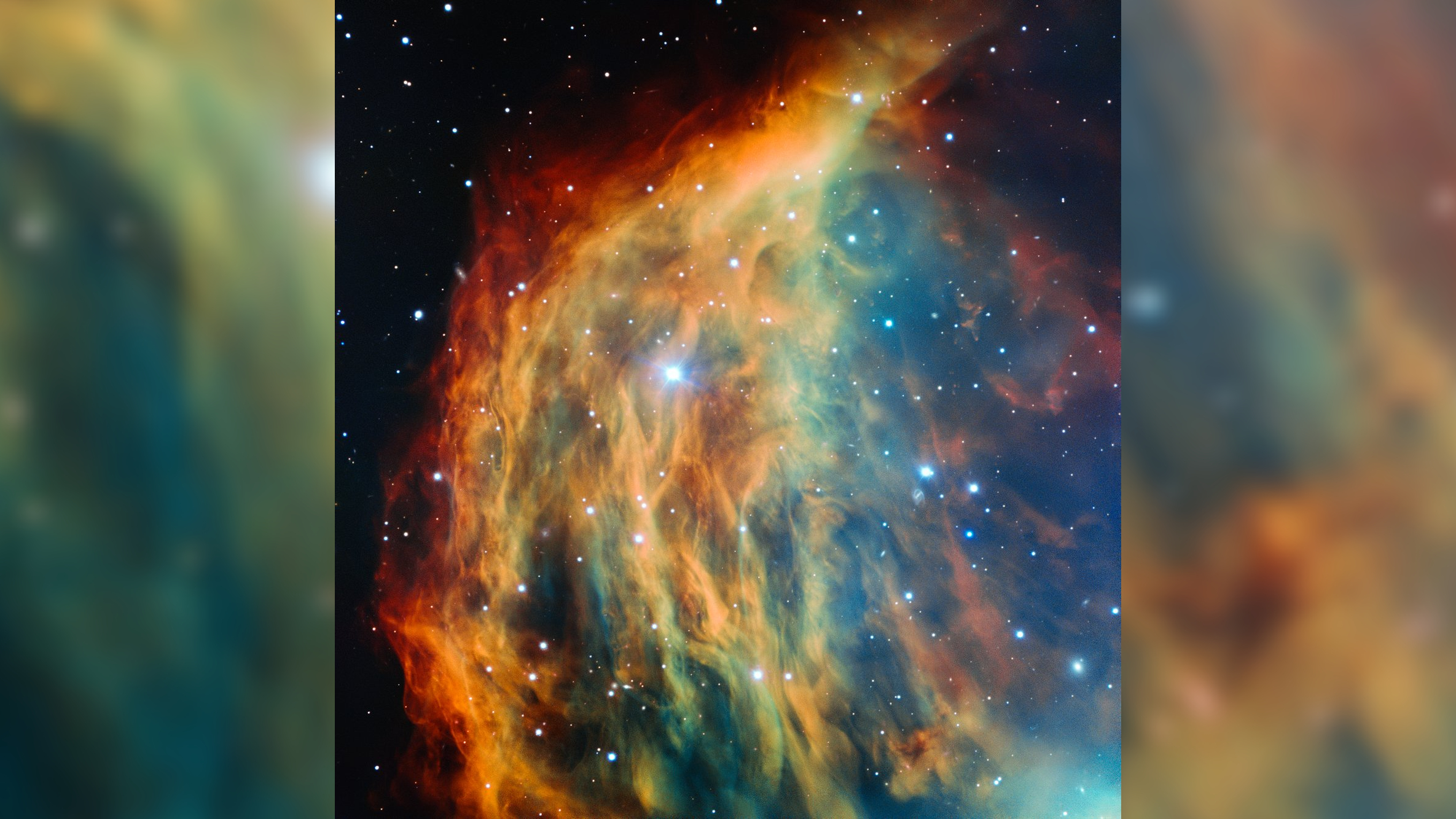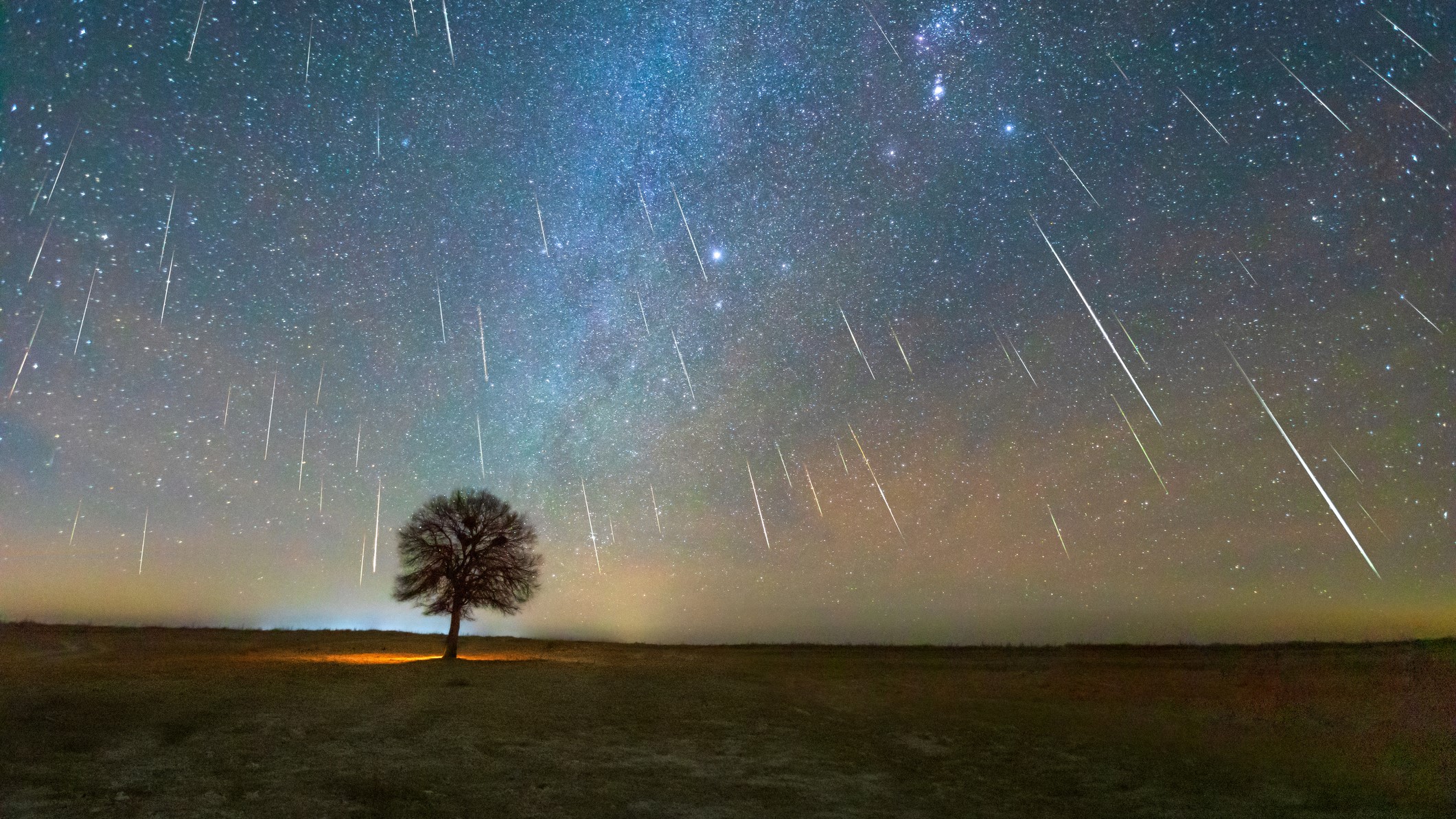Gemini constellation: Facts, location and myth
The Gemini constellation is anchored by dual stars Castor and Pollux, so named for the twins of Greek mythology.

The northern-sky constellation of Gemini is one of the original constellations listed by Ptolemy in the second century, as well as one of the 12 zodiac constellations.
The word "gemini" means twins in Latin; the constellation is associated with the Greek mythological twins Castor and Pollux, for whom two of the stars in the constellation are named, according to Britannica. (Castor is not actually a single star, but a system of six stars that are so close together, they appear as one.)
In other ancient astrological traditions, the twins are represented by pairs of goats or peacocks, or for other famous mythological twins like Remus and Romulus.
Gemini is also known for lending its name to NASA's Gemini program, so-named for its two-person spacecraft, as well as for its Geminga pulsar, unique for emitting primarily gamma rays instead of X-rays or visible light, according to NASA.
Beyond Castor and Pollux, there are eight other named stars in the Gemini constellation, according to the skywatching site Constellation Guide, and numerous deep-sky objects to observe through telescopes. Plus, the radiant point of the winter Geminid meteor shower is in the constellation.
Where is the Gemini constellation?
Gemini takes up 514 square degrees of the northern hemisphere's second quadrant, according to Constellation Guide, making it the 30th largest constellation. It's best seen in the winter months from the Northern Hemisphere.
You can find Gemini surrounded by the constellations of Auriga, Orion, Monoceros, Canis Minor, Cancer, and Lynx. The easiest way to spot Gemini is to locate Orion's Belt, then follow the line from Rigel (Orion's right foot and brightest star), through the belt, and up towards Betelgeuse (Orion's left shoulder). Continue that line, and you'll eventually spot Castor and Pollux.
Gemini observing targets
Gemini is full of targets for observation, both "near" and far. If you're looking to gear up for a stargazing session, read our guides to the best telescopes and best binoculars.
Related: Night sky: What you can see tonight [maps]
Breaking space news, the latest updates on rocket launches, skywatching events and more!
Jargon buster
Magnitude: Magnitude is a measure of how bright an object appears from Earth; the lower an object's magnitude, the brighter it is. Magnitude can even be measured in negative numbers, which indicate higher levels of brightness than positive numbers.
Right ascension (RA): Right ascension can be considered the sky's version of longitude on Earth. It covers the east-west direction and is measured in hours, minutes and seconds. It's used in conjunction with declination to help astronomers locate celestial objects.
Declination (Dec): Declination is comparable to latitude on Earth. It measures an object's location in the north-south direction in degrees, arcminutes and arcseconds (there are 60 arcseconds in an arcmin, 60 arcmins in a degree).
Castor
Magnitude: 1.58
Approximate distance from Earth: 51 light-years
Location: 7h 34m 25s (right ascension), +31°53'18"(declination)
Using a telescope, you can zoom in on Castor to distinctly see at least two, sometimes three, of the six stars that make up the system, according to the Milwaukee Astronomical Society. Impressively, each of these three stars is actually a double star, though the individual stars are difficult to discern without a very high-powered telescope.
Messier 35 (NGC 2168)
Magnitude: 5.3
Approximate distance from Earth: 2,800 light-years
Location: 6h 8m 54s (right ascension), +24°20'19" (declination)
Messier 35 is an open cluster of more than 500 stars that are loosely gravitationally bound. The cluster takes up an area of the sky that's about the same size as the full moon, according to the European Southern Observatory.
Medusa Nebula (Abell 21)
Magnitude: 15.99
Approximate distance from Earth: 1,500 light-years
Location: 7h 29m 3s (right ascension), +13°14'48" (declination)
The faint Medusa Nebula was discovered by astronomer George O. Abell in 1955, according to Astronomy Trek. The planetary nebula, which formed when a red giant star transitioned into a white dwarf, is approximately four light-years across.
NGC 2392
Magnitude: 9.9
Approximate distance from Earth: 5,000 light-years
Location: 7h 29m 11s (right ascension), +20°54'42" (declination)
NGC 2392 has a fantastic spherical shape. The planetary nebula is known by several nicknames, the most famous of which is no longer used due to its discriminatory nature; you can read more about the nickname in a NASA statement.
Jellyfish Nebula (IC 443)
Magnitude: 12
Approximate distance from Earth: 5,000 light-years
Location: 6h 17m 13s (right ascension), +22°31'5" (declination)
The Jellyfish Nebula is a 70-light-year-wide remnant of a supernova that is estimated to be between 3,000 and 30,000 years old, per Astronomy Trek.
Geminid meteor shower
The Geminid meteor shower is one of the most prolific meteor showers of the year, with a rate of 120 meteors per hour during its peak, according to NASA. The shower occurs between Nov. 19 and Dec. 24 with a peak around Dec. 14. Though the shower originates from the debris trail of asteroid 3200 Phaethon, its radiant point (that is, the point from which the meteors appear to emanate), is in the constellation Gemini.
Mythology
Castor and Polydeuces, or Pollux in Latin, were twin brothers in Greek mythology born to Queen Leda of Sparta and two fathers: King Tyndareus of Sparta and the god Zeus. As such, Castor was mortal and Pollux was immortal, according to the Chandra X-ray Observatory. The inseparable duo was known as the Dioscuri. During a familial dispute (or perhaps in battle), Castor was killed, but Pollux shared his immortality with his brother so that they could be together forever.
Gemini constellation FAQs answered by an expert
We asked Mike Reed, an astronomer and a distinguished professor in the Department of Physics, Astronomy and Materials at Missouri State University, a few frequently asked questions about the Gemini constellation.
Where is the Gemini constellation?
During July, the sun is right in the middle of Gemini, so it cannot be viewed at night. Being a sign of the zodiac, Gemini will travel across the sky to the south as the Earth spins, for those of us north of the Tropic of Cancer. It is between Cancer and Orion/Taurus, with the horns of Taurus pointing to it and being above Orion's head.
How can you find the Gemini constellation?
Look for it in the fall and winter. Gemini has two bright stars, which are named Castor and Pollux, twins of Greek mythology. The stars represent the eyes of the twins with their feet just dangling in the Milky Way. Pollux’s right foot is the star Alhena, a bright star right in line between the even brighter stars Pollux and red Betelgeuse in Orion.
How many stars are in the Gemini constellation?
Even in bright locations, if you can see stars, you’re likely to be able to see Castor and Pollux. From a reasonably dark site, you can see about a dozen stars, which make the twins appear as stick figures holding hands. The two bright stars Castor and Pollux are the eyes of the twins, but interestingly, Castor is actually six stars so distant they appear as one. It has two bright ones and four very dim ones, all gravitationally bound and traveling together. Being close in the sky to the Milky Way, Gemini has several open star clusters and nebulae.
Additional resources
Read the story behind the names of the Gemini twins from the Chandra X-Ray Observatory. Learn about the twin stars Castor and Pollux from NASA. Watch a video about the Geminid meteor shower by the Museum of Science, Boston.
Bibliography
Deep-Sky Objects in Gemini. Astronomy Trek. Retrieved July 9, 2023, from https://www.astronomytrek.com/deep-sky-objects-in-gemini/
Geminga. Britannica. Retrieved July 9, 2023, from https://www.britannica.com/place/Geminga
Gemini. Britannica. Retrieved July 9, 2023, from https://www.britannica.com/place/Gemini-constellation-and-astrological-sign
Gemini Constellation. Constellation Guide. Retrieved July 9, 2023, from https://www.constellation-guide.com/constellation-list/gemini-constellation/
Geminids. NASA. Retrieved July 9, 2023, from https://solarsystem.nasa.gov/asteroids-comets-and-meteors/meteors-and-meteorites/geminids/in-depth/
Messier 35 – A cluster of stars. European Southern Observatory. Retrieved July 9, 2023, from https://www.eso.org/public/italy/images/b10/?lang
NASA to Reexamine Nicknames for Cosmic Objects. NASA. Retrieved July 9, 2023, from https://www.nasa.gov/feature/nasa-to-reexamine-nicknames-for-cosmic-objects
Stargazing Gemini the Twins. Milwaukee Astronomical Society. Retrieved July 9, 2023, from https://milwaukeeastro.org/Stargazing/gemini.asp

Space.com contributing writer Stefanie Waldek is a self-taught space nerd and aviation geek who is passionate about all things spaceflight and astronomy. With a background in travel and design journalism, as well as a Bachelor of Arts degree from New York University, she specializes in the budding space tourism industry and Earth-based astrotourism. In her free time, you can find her watching rocket launches or looking up at the stars, wondering what is out there. Learn more about her work at www.stefaniewaldek.com.




